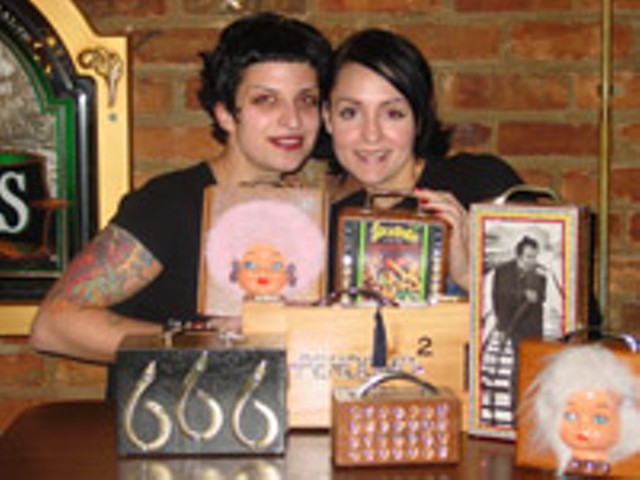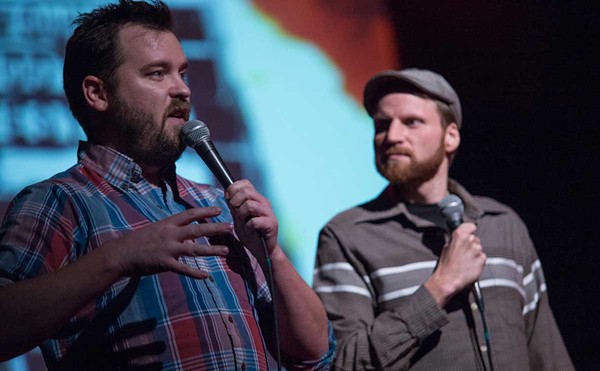Yuletide, more than any other time of year, draws lapsed Catholics back to the flock. The motivations behind these furtive church visits vary: tradition, guilt, obligation, celebration.
Last Christmas Eve, I joined the parade of prodigal sons and daughters darkening the doors of churches. My motivation was probably atypical — I was simply searching for a little solitude. It seems that spending an entire holiday afternoon and evening with a raucous family can drive one to the bottle — or to Midnight Mass at St. Albertus, the oldest Polish-Catholic parish in Detroit.
The church has been without a boiler for a few years now. As a result, the wintry Mass acquires a dark, haunting mysticism. Scattered worshipers are rendered anonymous as they shiver in their hoods, coats and gloves.
The liturgy is celebrated in Polish, which reaffirms the familiarity of the ritual. The Mass unfolds as it always has, and always will, which is comforting and reassuring, like a mother’s caress.
This, to me, is the real power of religion: the voice of tradition. It is a thread to our pasts, a link to our ancestors. This is precisely why — as a Polish-Catholic on my mother’s side — the story of St. Albertus Parish so fascinates me.
Even the naming of St. Albertus was appropriately “Polish.” The church was officially dedicated in 1871 to St. Wojciech, the Polish-Bohemian patron saint, and was to be located at the southwest corner of St. Aubin and Canfield. But the Latin version of Wojciech, Adalbertus, was inaccurately translated to English as Albertus, or Albert, the patron saint of scientists.
The St. Albertus parish grew in spite of the misnomer. Demographics in the area shifted accordingly. Detroiters came to know the neighborhood as “Poletown.” The Polish community, however, commonly referred to it as “Wojciechowo,” or the “District of St. Albertus.”
The Spitzely Brothers, under the direction of Father Dominic Kolasinski, built St. Albertus from 1883-85. At the time of its dedication, on July 4, 1885, it reigned as the largest Catholic church in Michigan, the second-largest Polish-Catholic parish in the nation, and the first church in the city of Detroit to feature electric lights and steam heat. It is a brick Gothic structure, similar in appearance to churches found in the Prussian region of Poland.
The medieval interior of St. Albertus is absolutely stunning. The intricate marble pulpit, baptismal font and altars grant proper gravity to an otherwise light-filled, soaring space. Skeletal organ pipes, floating angels and pious saints fill every perspective, creating a visual feast of color and religious drama.
But not long after opening, St. Albertus became a battleground. The parish angrily split into two factions in November 1885. The flash point was the removal of Father Kolasinski, who was suspended from the pastorate by Bishop Borgess of the Diocese of Detroit for various reasons, including alleged financial mismanagement.
The resulting upheaval prevented Kolasinski’s replacement, Father Joseph Dombrowski, from even saying Mass inside the church. A march to the diocesan office on Christmas Day 1885 to protest the closure of St. Albertus ended in a riot. One young parishioner, John Lewicki, was shot to death.
When a civil court reaffirmed the decision of the diocese in April 1886, the Kolasinskians did not quietly acquiesce. They began creating a parish of their own, just down the street. In 1889, Father Kolasinski founded the Sweetest Heart of Mary parish, located at the corner of St. Aubin and Russell streets. Construction on the Sweetest Heart of Mary Cathedral began in 1890, although the parish existed outside the official auspices of the diocese.
Conflict between the Kolasinskians and the Dombrovites of St. Albertus continued, culminating in the death of 19-year-old Joseph Bolda, a Dombrovite, on Christmas Eve 1891.
After years of efforts on the behalf of Father Kolasinski, Sweetest Heart of Mary was officially received into the Diocese of Detroit on February 18, 1894.
Amid the turmoil, life went on down the street at St. Albertus. In 1889, Bishop Borgess’ successor, Bishop Foley, ordained John Lemke Jr. to the priesthood; he was St. Albertus’ first native son to attain the priesthood.
By 1913, St. Albertus was ministering to 2,000 families — this in spite of the construction in northeast Detroit of five additional Polish-Catholic churches: Sweetest Heart of Mary, St. Josaphat, St. Stanislaus, St. Hyacinth and St. Florian (Hamtramck).
The three-story school building that remains part of the St. Albertus campus was completed in 1917. It fronts Canfield immediately behind the church.
But St. Albertus would undergo an inexorable decline in numbers. Enrollment of 1,100 families in 1932 fell to 700 by 1952. The school closed its doors in 1966. The final blow was dealt in 1990, when the Archdiocese of Detroit officially closed St. Albertus Church.
If the past has shown us anything, though, it’s that the parishioners of St. Albertus are anything but passive. All three buildings comprising the St. Albertus parish campus — church, school and rectory — were purchased by the Polish American Historic Site Association (PAHSA) in 1990. Its members are primarily St. Albertus parishioners and their ancestors.
Obviously, PAHSA has a huge job on its hands: maintenance of three huge, century-old buildings with minimal financial resources. Good things are happening, though. Mass is held at the church once a month, and enough money has been raised for a down payment on a boiler. The school stands empty, but there has lately been talk of it being leased to a charter school.
The best news concerns the rectory, which was built in 1891. Three live-in caretakers — children and nephews of past parishioners — are painstakingly restoring the mansion to its original glory. They are onsite day and night. Room by room, the three-story building that once housed a bevy of priests and bustled with activity is revealing its glorious face. Marvelous details abound: leather floors, Pewabic-tiled fireplaces, papered walls and graceful curves of plaster.
The young restoration crew was drawn to this undertaking by the same thing that drew me to Midnight Mass; the same thing that draws many folks to make a similar journey back to the faiths of their childhoods each Christmas: family, tradition and a quest for inner peace that many of us embark upon unwittingly.
Perhaps we all covet a community that would inspire enough passion to set us marching on a December morning, to ignore church elders, to stand up with some neighbors and against others.
The sordid histories of St. Albertus and Sweetest Heart of Mary are hardly glamorous, but in an age when most of us seek to minimize turbulence in our lives, it strikes me that passion and faith may give off such glorious white heat as to make the minor disturbances of everyday life nearly irrelevant.
St. Albertus is located at 4231 St. Aubin at Canfield in Detroit, just northeast of Eastern Market.
Christmas Eve Midnight Mass will be celebrated this year, with doors to open at 11 p.m. A collection toward the maintenance and restoration of St. Albertus will be taken at the Mass and at all others celebrated monthly. Learn more about the history of St. Albertus and PAHSA’s efforts toward its permanent stability at www.stalbertus.org. Visit www.sweetestheartofmary.org to learn more about the controversial Father Kolasinski and the founding of Sweetest Heart of Mary.
Kelli B. Kavanaugh is a local freelance writer. E-mail [email protected]



